
Nijubashi Bridge: A Timeless Icon of Tokyo
Discover the beauty and history of Nijubashi Bridge, a stunning architectural landmark in Tokyo, set against the backdrop of the Imperial Palace.
Nestled in the heart of Tokyo, Nijubashi Bridge is a stunning historical landmark that combines architectural beauty with rich cultural significance. Its picturesque vistas and serene surroundings make it a must-visit for tourists seeking to capture the essence of Japan's capital. Whether you're strolling through the East Gardens of the Imperial Palace or simply appreciating the bridge's elegant design, Nijubashi offers a mesmerizing experience that should not be missed.
A brief summary to Nijubashi Bridge
- 1-7 Chiyoda, Chiyoda City, Chiyoda, Tokyo, 100-0001, JP
- +813-3213-1111
- Visit website
Local tips
- Visit early in the morning or late afternoon for the best lighting for photography.
- Combine your visit with a stroll through the East Gardens for a full cultural experience.
- Check for any seasonal events or festivals that may occur in the surrounding area.
- Bring a picnic to enjoy in the nearby gardens, making for a relaxing afternoon.
Getting There
-
Subway
If you are starting from Tokyo Station, take the Marunouchi Line (red line) from Tokyo Station to Otemachi Station. The journey takes about 2 minutes. Once you arrive at Otemachi Station, take Exit A1. After exiting, walk straight towards the Imperial Palace East Gardens, which will take you about 10 minutes. You will see Nijubashi Bridge as you approach the main entrance to the Imperial Palace.
-
Train
From Shinjuku Station, take the JR Chuo Line (Rapid) towards Tokyo Station. The trip takes about 15 minutes. Once you arrive at Tokyo Station, follow the instructions above to reach Nijubashi Bridge via the Marunouchi Line.
-
Walking
If you are near the Imperial Palace, you can walk to Nijubashi Bridge. From the East Gardens of the Imperial Palace, head towards the main gate, and you will see the bridge directly in front of you. The walk is about 5 minutes.
-
Bus
Take the Toei Bus 'B12' from your location (check for the nearest bus stop) and get off at the 'Kokyo Gaien' stop. The bus ride will take about 20 minutes. From the bus stop, walk for about 5 minutes towards the Imperial Palace, and you will be able to see Nijubashi Bridge.
Discover more about Nijubashi Bridge
Iconic landmarks you can’t miss
Japanese Geodetic Origin Point
0.6 km
Explore the Japanese Geodetic Origin Point, a historical landmark in Tokyo, symbolizing Japan's rich geodetic heritage amidst a bustling city.

1-chōme-2-1 Kasumigaseki
0.7 km
Explore Kasumigaseki, Tokyo's political heart, where modernity meets tradition, offering a unique glimpse into Japan's governance and vibrant urban life.

The East Gardens of the Imperial Palace
0.8 km
Experience the tranquility and historical richness of The East Gardens of the Imperial Palace, a serene retreat in the heart of Tokyo's bustling landscape.

Imperial Palace East Gardens
0.8 km
Explore the serene beauty and rich history of the Imperial Palace East Gardens, Tokyo's tranquil escape in the heart of the city.

LIVE JAPAN office
0.9 km
Explore Tokyo like a local with insights from the LIVE JAPAN office at Tokyo Midtown Hibiya. Your gateway to unforgettable experiences in Japan.

Mitsubishi Ichigokan Museum
0.9 km
Discover the stunning fusion of contemporary art and historical architecture at Mitsubishi Ichigokan Museum in Tokyo.

Imperial Hotel Tokyo
0.9 km
Experience unparalleled luxury and timeless elegance at the Imperial Hotel Tokyo, an iconic destination in the heart of Japan's vibrant capital.

Kita-Hanebashi Gate
1.0 km
Explore the historic Kita-Hanebashi Gate in Tokyo, a beautiful heritage site showcasing traditional Japanese architecture and cultural significance.

Remains of Tokyo Prefectural Office
1.1 km
Discover the historic Remains of Tokyo Prefectural Office, a unique blend of architectural beauty and rich history in the heart of Tokyo.

Sukiyabashi Park
1.2 km
Experience tranquility at Sukiyabashi Park, a serene urban oasis in Tokyo, perfectly situated near the bustling districts of Ginza and Yurakucho.

Young Clock Tower
1.2 km
Discover the Young Clock Tower in Tokyo's Ginza district, a breathtaking sculpture that merges history with modern design, perfect for every traveler.

Tokyo Station
1.2 km
Explore Tokyo Station, an architectural gem and the gateway to Japan's vibrant transport network, blending history with modern convenience.
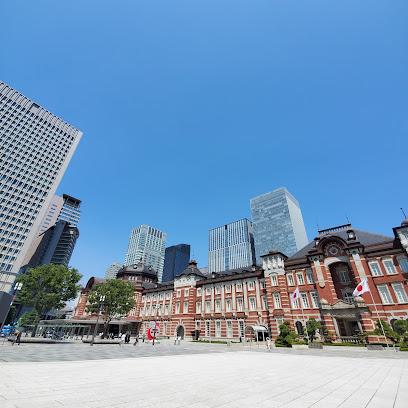
Chidorigafuchi Moat
1.3 km
Discover the enchanting beauty of Chidorigafuchi Moat, a historical landmark in Tokyo renowned for its cherry blossoms and serene landscapes.
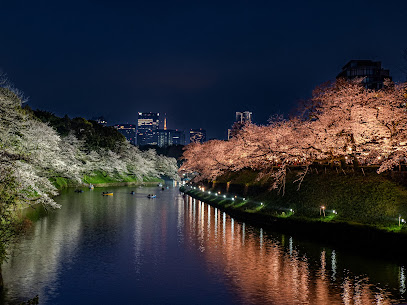
Angel of Ginza
1.3 km
Discover the Angel of Ginza, a stunning sculpture that captures the essence of Tokyo's art scene in the heart of its upscale shopping district.

Seiko House Ginza Clock Tower
1.4 km
Discover the Seiko House Ginza Clock Tower, a stunning blend of history and craftsmanship in Tokyo's vibrant Ginza district.

Unmissable attractions to see
Nijubashi Moat
0.2 km
Explore the tranquil beauty of Nijubashi Moat, a historical gem in Tokyo, where nature and history meet in perfect harmony.

Sakurada-mon
0.2 km
Explore the stunning Sakurada-mon, a historical landmark in Tokyo, and experience the beauty of Japan's imperial heritage.

Chowaden (Reception Hall of lmperial Palace)
0.2 km
Explore Chowaden, the stunning Reception Hall of the Imperial Palace, a symbol of Japan's rich cultural heritage and architectural elegance.
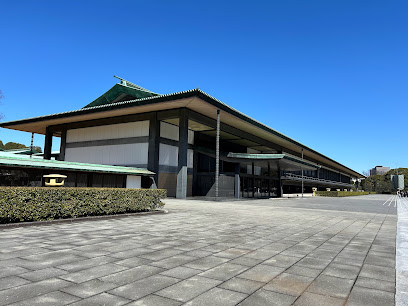
Kokyo-mae Hiroba
0.3 km
Discover tranquility at Kokyo-mae Hiroba, the serene park adjacent to Tokyo's Imperial Palace, perfect for relaxation and stunning views.

Kokyo Gaien National Garden
0.4 km
Discover the serene beauty of Kokyo Gaien National Garden, a tranquil oasis in Tokyo featuring lush landscapes, historical landmarks, and seasonal wonders.

Imperial Palace
0.6 km
Discover the Imperial Palace in Tokyo, a historical gem surrounded by lush gardens, offering a glimpse into Japan's rich cultural heritage.

Kikyō-mon Gate
0.6 km
Discover the historical significance and architectural beauty of Kikyō-mon Gate, a must-visit landmark in Tokyo's Imperial Palace.

Flowerbed 1
0.7 km
Discover the serene beauty of Flowerbed 1 in Tokyo, a lush park offering vibrant floral displays and a tranquil retreat in the bustling city.

The Place of Death of Date Masamune
0.7 km
Explore the serene final resting place of Date Masamune, a pivotal figure in Japan's feudal history, nestled in Tokyo's tranquil Hibiyakoen.

Hyakunin Bansho Guardhouse
0.7 km
Discover the rich heritage of Tokyo at the Hyakunin Bansho Guardhouse, a cultural and historical landmark showcasing Edo period architecture and history.

Meiji Seimei Kan
0.7 km
Explore the architectural beauty and historical significance of Meiji Seimei Kan, a cultural gem in the heart of Tokyo.
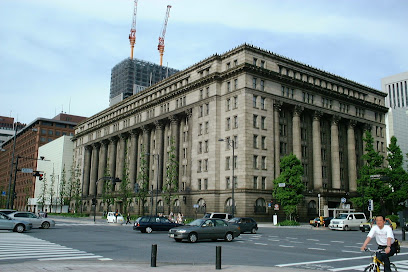
Wadakura Fountain National Park
0.7 km
Discover the tranquil beauty of Wadakura Fountain National Park, where nature meets history in the heart of Tokyo.

Parliamentary Museum
0.8 km
Explore Japan's legislative history at the Parliamentary Museum in Tokyo, where engaging exhibits reveal the evolution of governance and democracy.

Hibiya Park
0.8 km
Discover Hibiya Park, Tokyo's urban oasis, boasting stunning gardens, rich history, and vibrant cultural events in the heart of Japan's capital.

Imperial Theatre
0.8 km
Experience the elegance of the Imperial Theatre in Tokyo, where tradition meets modernity in captivating performances and stunning architecture.

Essential places to dine
Tosa Cuisine Neboke Marunouchi
0.8 km
Experience authentic Tosa cuisine at Neboke Marunouchi – where tradition meets flavor in every dish.

日本料理 龍吟
0.8 km
Discover exceptional kaiseki cuisine at Nihonryori Ryugin in Tokyo – where tradition meets innovation for an unforgettable dining experience.

Restaurant Toyo Tokyo
0.9 km
Experience exquisite French-Japanese fusion cuisine at Restaurant Toyo Tokyo, where culinary artistry meets elegant dining in the heart of Japan's capital.

Hei Fung Terrace
0.9 km
Experience authentic Chinese cuisine at Hei Fung Terrace in Tokyo – where tradition meets luxury in every dish.

Plaiga TOKYO
0.9 km
Discover culinary artistry at Plaiga TOKYO - where modern French cuisine meets sophistication in the heart of Marunouchi.

Sushi Omi
1.1 km
Discover Sushi Omi: Tokyo's premier destination for authentic Japanese sushi crafted with fresh ingredients and expert artistry.

Musashi by Aman
1.2 km
Experience the art of sushi at Musashi by Aman – where tradition meets luxury in Tokyo's skyline.

The Cafe By Aman
1.2 km
Discover unparalleled elegance and exquisite flavors at The Cafe By Aman in Tokyo's Otemachi Tower.

Sushi Tajima
1.2 km
Experience exquisite sushi craftsmanship in Tokyo's upscale Ginza district at Sushi Tajima.

Nagatacho Sushi Kanesaka
1.2 km
Discover authentic Japanese flavors at Nagatacho Sushi Kanesaka, where every bite transports you to culinary bliss.

TOSA DINING おきゃく
1.3 km
Discover TOSA DINING おきゃく: A Culinary Journey Through Creative Japanese Cuisine in Tokyo's Iconic Ginza District.

Ninja Tokyo
1.3 km
Discover the fusion of tradition and innovation at Ninja Tokyo—where every dish tells a story in an enchanting setting.

Dazzle
1.3 km
Experience the essence of Italy at Dazzle in Ginza—where exquisite cuisine meets stunning city views.

Yonezawa Gyu Oki
1.3 km
Discover the exquisite taste of Yonezawa beef at Yonezawa Gyu Oki—where tradition meets culinary excellence in Tokyo.

Japanese Restaurant WA
1.3 km
Experience authentic Japanese cuisine in the heart of Tokyo's Ginza district at Restaurant WA - where tradition meets taste.

Markets, malls and hidden boutiques
SWEETS & GIFTS
0.7 km
Discover a luxurious dessert experience at Sweets & Gifts in Marunouchi, Tokyo, offering exquisite pastries and gourmet chocolates.

PLAZA Tokyo Store
1.0 km
Experience the vibrant shopping culture at PLAZA Tokyo Store, where unique finds and local flavors await you.

Good Design Store TOKYO by NOHARA
1.0 km
Explore Good Design Store TOKYO by NOHARA for unique gifts and home goods that reflect Japan's rich design culture.

THE SHOP TOKYO
1.0 km
Explore the whimsical world of THE SHOP TOKYO, where unique gifts and delightful surprises await in the heart of Marunouchi.

Nippon Department Tokyo
1.1 km
Discover the essence of Japan at Nippon Department Tokyo, your one-stop shop for unique souvenirs, local delicacies, and cultural treasures.

HATO MARCHE Gift Shop
1.1 km
Explore HATO MARCHE Gift Shop in Tokyo for unique souvenirs and gifts that embody the spirit of Japan, perfect for every traveler.

Sanrio World Ginza
1.2 km
Explore a treasure trove of Sanrio delights at Sanrio World Ginza, a must-visit gift shop in Tokyo's vibrant shopping district.
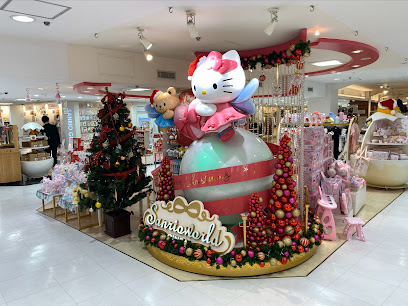
トルコ雑貨Lord Handmade Gallery 銀座店
1.2 km
Explore authentic Turkish souvenirs and exquisite carpets at Lord Handmade Gallery, a charming gem in Tokyo's vibrant Ginza district.

Oh My Glasses Tokyo Tokyu Plaza Ginza
1.2 km
Explore stylish eyewear at Oh My Glasses Tokyo in Ginza, where fashion meets functionality in the heart of Tokyo's upscale shopping district.

OLD-FASHIONED STORE TOKYO
1.2 km
Experience a delightful blend of nostalgia and modernity at Old-Fashioned Store Tokyo, where unique fashion accessories and novelty items await.

Gift Kiosk
1.3 km
Explore the vibrant Gift Kiosk in Tokyo for unique souvenirs that celebrate Japanese culture and make your travel memories unforgettable.

G-Star RAW Store
1.3 km
G-Star RAW Store in Tokyo's Ginza district: A fashion hub for denim lovers and trendsetters, blending style and sustainability.

First Avenue Tokyo Station
1.4 km
Experience the heart of Tokyo at First Avenue Tokyo Station, a shopping and dining paradise beneath the iconic station.

SEIKO DREAM SQUARE
1.4 km
Discover timeless elegance at Seiko Dream Square, Tokyo's premier destination for exquisite watches and rich craftsmanship.

HANDS Tokyo Store
1.4 km
Explore HANDS Tokyo Store, a vibrant gift shop featuring unique souvenirs, DIY supplies, and a variety of home and stationery products in the heart of Tokyo.

Essential bars & hidden hideouts
MAIN BAR
0.7 km
Discover sophistication and exquisite cocktails at MAIN BAR, an upscale bar experience in the heart of Tokyo's Marunouchi district.
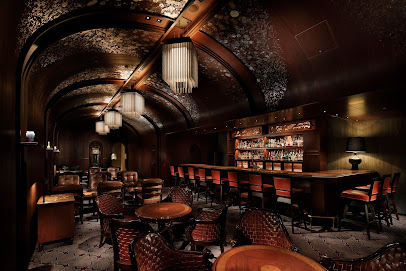
RIGOLETTO WINE AND BAR
1.0 km
Experience the best of Italian and Spanish cuisine at Rigoletto Wine and Bar, featuring an exquisite wine selection in Tokyo's Marunouchi district.

BAR Oak
1.1 km
Discover the elegance of BAR Oak, a luxurious bar within Tokyo Station Hotel, offering exquisite cocktails and a serene ambiance in the heart of Tokyo.

Omiki bar
1.2 km
Discover Omiki Bar in Ginza, where elegance meets expertly crafted cocktails in a chic atmosphere, perfect for a night out in Tokyo.

Jazz & Soul Bar - The Deep
1.2 km
Discover the soulful rhythms and cozy ambiance of Jazz & Soul Bar - The Deep, Tokyo's hidden gem in the heart of Ginza.

VIRTÙ
1.2 km
Experience a unique blend of French and Japanese cuisine at VIRTÙ, Tokyo's premier bar and restaurant in Otemachi.

Hitachino Brewing Marunouchi
1.2 km
Experience the essence of Japanese craft brewing at Hitachino Brewing Marunouchi, a vibrant brewpub in the heart of Tokyo offering unique beers and delicious cuisine.

BAR TOKYO
1.2 km
Discover BAR TOKYO: A cocktail haven in Ginza with an inviting atmosphere, exquisite drinks, and delicious snacks to enhance your night out.

THE BAR CASABLANCA GINZA
1.2 km
Discover the charm of The Bar Casablanca Ginza, Tokyo's elegant bar offering exquisite cocktails and a taste of vibrant nightlife in the heart of Ginza.

Bar Landscape.
1.2 km
Experience the chic ambiance and exquisite cocktails at Bar Landscape, a premier Ginza bar blending modern style with Tokyo's vibrant nightlife.

ORCHARD GINZA
1.3 km
Discover the artistry of cocktails in the intimate setting of Orchard Ginza, Tokyo's hidden bar gem offering exceptional drinks and personalized service.

High Five
1.3 km
Discover High Five, a premier bar in Ginza, Tokyo, known for its exquisite cocktails and vibrant nightlife ambiance.

Bar Four Seasons
1.3 km
Experience the elegance of Bar Four Seasons in Ginza, Tokyo's premier destination for exquisite cocktails and a sophisticated atmosphere.
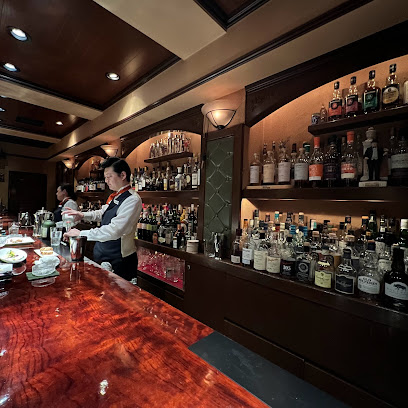
Hitachino Brewing Lab Tokyo
1.3 km
Discover the art of craft brewing at Hitachino Brewing Lab Tokyo, where tradition meets innovation in every sip.

Ginza 300
1.3 km
Discover Ginza 300: A lively cocktail bar in Tokyo, offering a unique blend of flavors, affordable drinks, and a vibrant social atmosphere.




